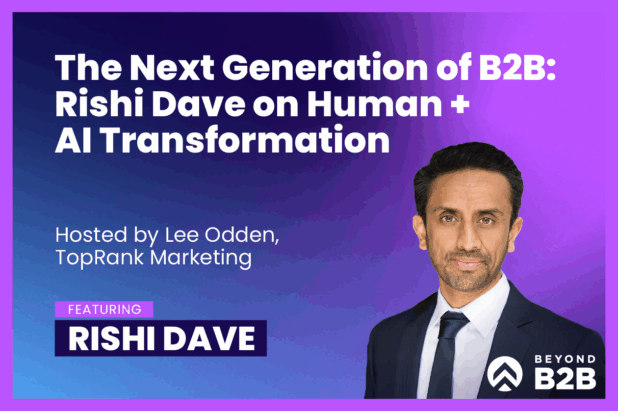Just as every B2B company stakes a claim to a market position, each of them has a story to share. The challenge is in figuring out how to share that story in a way that aligns with the needs and priorities of prospects and customers. But, it’s not just sharing the story. It’s about making the story so compelling that it elevates perceptions of value and urgency resulting in more qualified leads and faster purchasing momentum.
This is the sage advice from Ardath Albee, a B2B Marketing industry thought leader and practitioner that consistently delivers useful information. In fact, Ardath was one of the participants in our Content Marketing Secrets project and has been in the B2B content marketing game a very long time. The following post is a summary of her presentation at the recent Content Marketing World.
B2B marketers are facing a business environment with an increasingly complex mix of channels and skills needed to create a content and eMarketing strategy that, when executed well, results in quantifiable proof to downstream revenues. While over 90% of B2B marketers are investing in content as part of their marketing mix, content marketing is more than just creating content that your buyers care about.
The first thing your content should do is capture attention, then create engagement and get people talking and sharing in relation to solving the problem. Once you do that, you’ll start to be able to quantify the contribution to revenue.
To be more effective with B2B content marketing investments, we need to think about the positioning of our companies.
Positioning: The art of sharing your distinct value in ways that resonate with your buyers compelling them to engage, trust and ultimately buy from you.
Positioning is all about your company’s distinct value.
Distinct Value: The intersection of your company’s strengths with customer needs.
Examples: In the 1970’s, Volvo’s positioning was about safety. Today they’re still known for safety. Apple is known for intuitive use – easy to use. Google is known for finding anything. Cisco has been known for intelligent networking. To expand the reach of their brand, Cisco’s positioning has become more about “the human network”.
To internalize and invest in the importance of content marketing, positioning and distinct value, some companies like BMC Software are developing an internal content marketing agency within their company to be a resource for consistent branding and messaging across the organization.
What is your company known for? What’s it’s position?
Put your distinct value at the center of your content plans. The topics around the center are the pain points for a particular persona. Speaking of persona’s here’s a handy free tool for developing buyer personas: http://upcloseandpersona.com
Buyer value statement as premise: “As the Director of IT Service Delivery, I need to eliminate manual processes for the service desk in order to improve performance and meet SLAs.”
Corporate positioning is the pivot point. Build stories that are relevant to buyer personas without losing distinct value, i.e. stories that are important to both the buyer and that convey value about the brand.
In this way, stories are a narrative meant to inform, educate or entertain. Stories can be about any of the distinct values and how they get solved.
“Story gives people enough space to think for themselves”
Aligning brand and consumer interests means you have to think about the story from end to end. You need to figure out how your distinct value plays at each point in the story. Think ahead and figure out the gaps in your story to anticipate objections.
3 Critical Components of Stories:
1. Hero – Save the day for your prospects. Buyer should always be the hero in your stories.
2. Villan – Anything that gets in the prospects way to solving the problem is the villain.
3. Mentor -A character that educates the hero to overcome the villan
There are structures to telling stories in B2B marketing. When you start crafting a story, start with the trouble your prospect persona is having. What’s gone wrong? Example: Missed SLAs due to manual processes.
Respond to trouble. Start with something informational. Examples:
- How to evaluate services related to what your brand offers specific to this value statement
- What to do when a common problem solved by your solution occurs for your target customer
- 3 Steps to solving problem x y z
- How to make sure you don’t experience pain point x y z
Think about how these things would play out in a conversation. Listen for what the objections might be. What are some of the obstacles and conflicts that would get in the way of solving the problem? This will help guide you in answering or countering objections within your content. It will also help you anticipate what comes next.
Story divers: Objectives and Obstacles. People are inherently lazy. If there are real or perceived obstacles, they’re not going to take next steps with you. Remove those obstacles in the stories you tell.
Make sure you connect the dots for your prospects. They will not do it themselves. Stories do not need to change over time if they are still valid. They may need to be refreshed, but you may not need to create more new content. Rather, think more about how to get more use from the content you already have. As long as the trouble exists, the story is valid.
Another thing to pay attention to is story consistency. Stay consistent across all the different channels.
Think about how your resources are allocated: Do you need to be in all the channels where you are? It’s better to be the best at a few channels than mediocre at many of them, causing inconsistent story and experiences for prospects.
6 Mistakes Made in B2B Storytelling
- Too much about YOU
- Not serializing the story
- Failing to tell the story across channels
- Addressing the wrong “trouble”
- Forgetting about conflict
- Talking about your company in the 3rd person
Effective B2B content marketing is more than empathizing with buyer interests and needs. Content creation and marketing investments must be accountable and serve the buyer’s needs relevant to the problems they’re trying to solve. Managing content creation in such an environment can be achieved through storytelling and developing brand positioning (what your company stands for) and articulating a distinct value (how your solutions meet buyer needs).
Have you developed a position, distinct value and buyer personas for your company’s B2B marketing strategy? How are you using storytelling to communicate with buyers to create awareness, engagement and inspire action? If you’re interested in B2B content marketing strategy, creation and promotion services, I know someone who can really deliver 🙂



